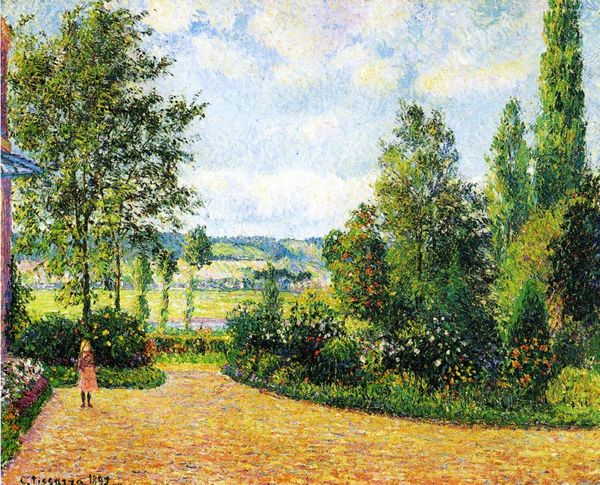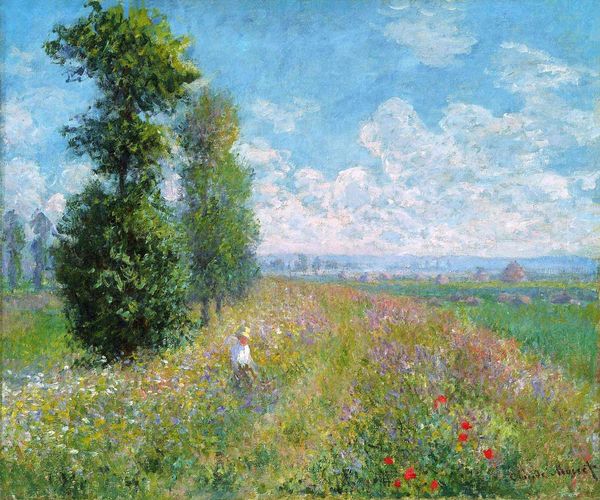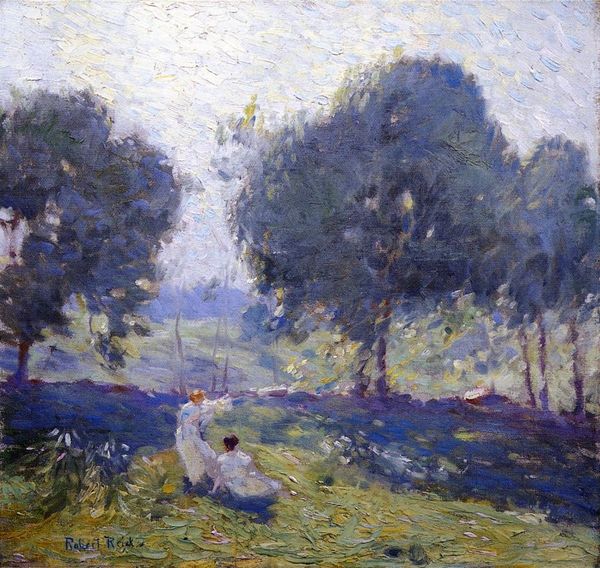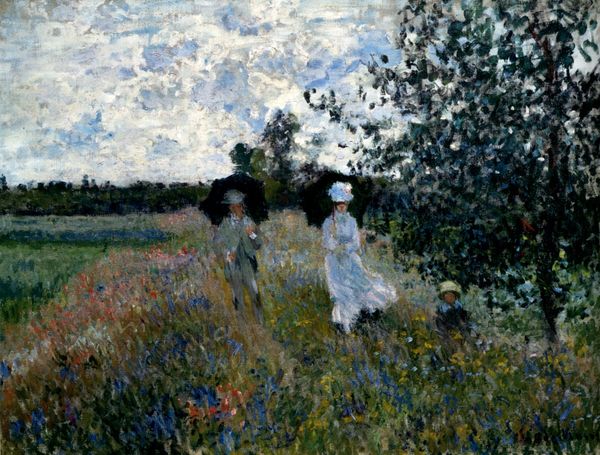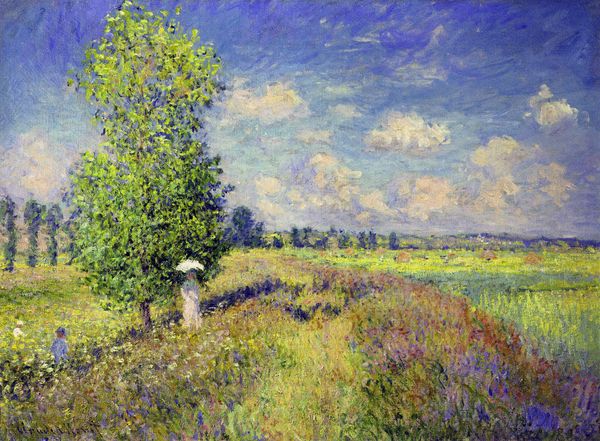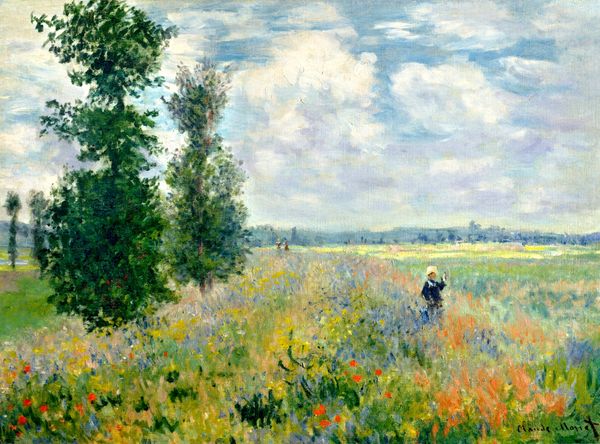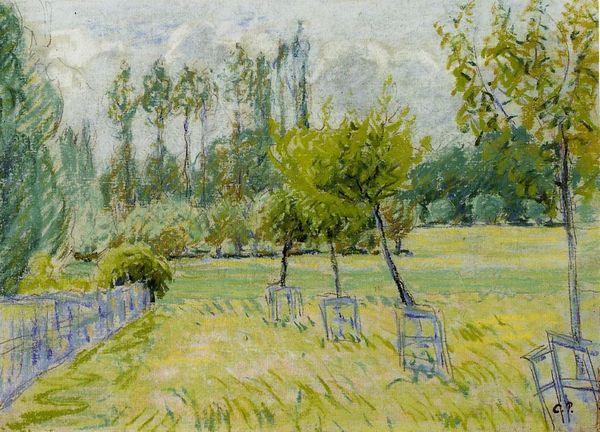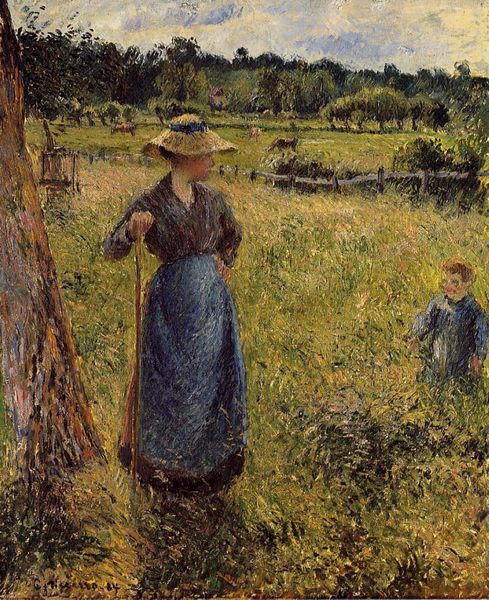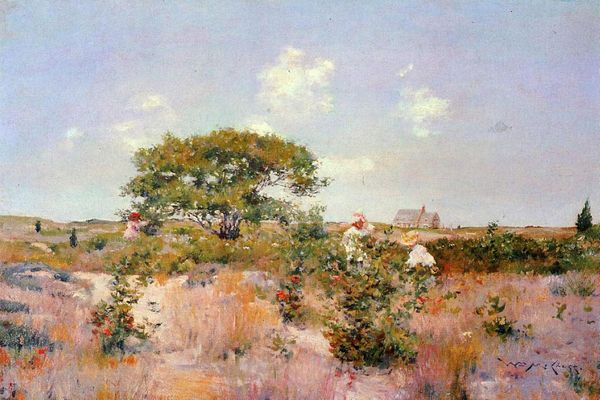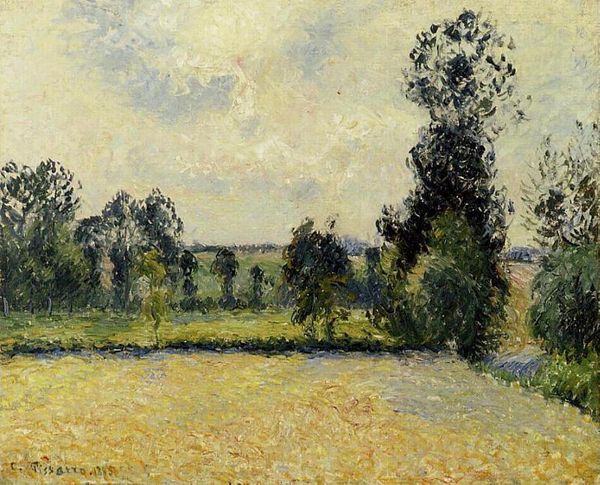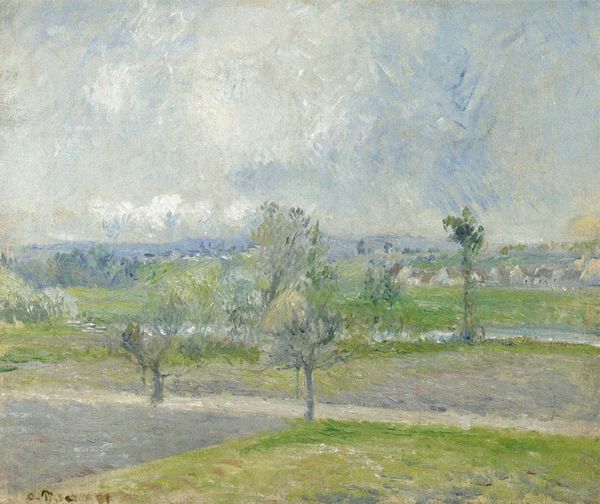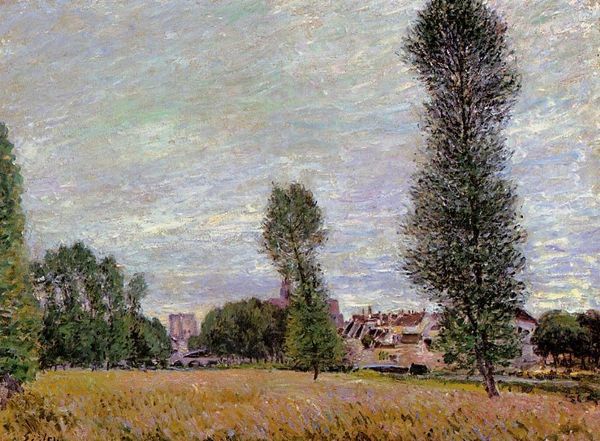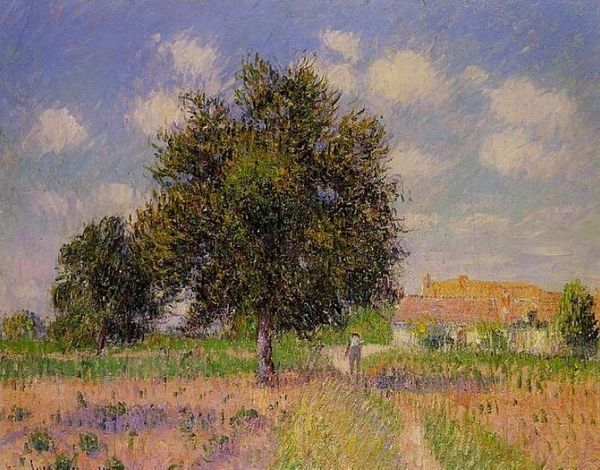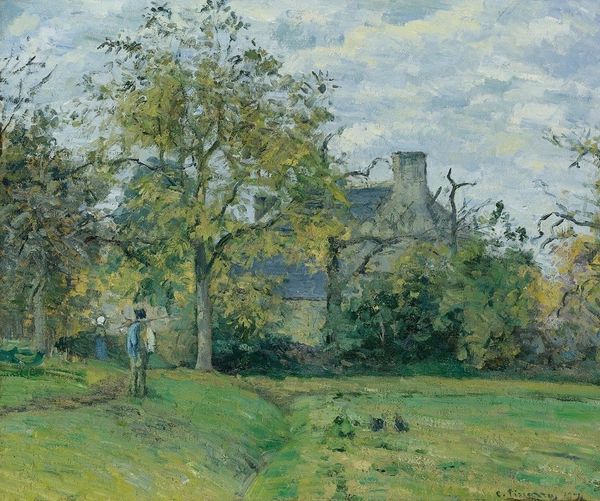
painting, plein-air, oil-paint
#
portrait
#
tree
#
painting
#
impressionism
#
plein-air
#
oil-paint
#
landscape
#
flower
#
impressionist landscape
#
nature
#
plant
#
group-portraits
Copyright: Public domain
Curator: This is Claude Monet's "The Promenade, Argenteuil," painted in 1875. It’s an oil-on-canvas piece created in the plein-air style, truly capturing the essence of a summer's day. Editor: It's got such a dreamy quality. The way the colors blur together, it almost feels like a half-remembered memory, hazy and sun-drenched. Makes you want to just flop down in that field! Curator: Absolutely. Monet often depicted scenes of leisure, and situating this work within the rising bourgeois class and their increased access to recreational activities contextualizes this painting. We see here the gendered space of the promenade; a social space dominated by upper and middle class women. Editor: The brushwork is just...wild, though. It's not trying to be realistic, is it? More about the feeling of light and air on skin, maybe? Or is it simply just light interacting with the landscape that interested Monet. Curator: Precisely. Impressionism was revolutionary because it moved away from academic realism. Monet focuses on capturing fleeting moments, on the optical sensations of light and color. You notice the thick impasto of the paint, really emphasizing texture and movement, reflecting an emerging cultural move toward prioritizing the sensory and lived experiences of the individual over academic values. Editor: There's a definite sense of the women in nature—very integrated into the landscape. It feels much more authentic to me because it is a real engagement between the figure and their surroundings instead of creating artificial environments where someone doesn't belong to. Curator: It brings into focus the constructed nature of gender, and that by moving outside the studio he has deconstructed it with elements of nature and class structures which were changing. It also points to broader discourses about representation, challenging established artistic conventions of portraiture in favour of documenting daily life with those closest to the artist in tow, such as Camille Doncieux, Monet’s wife, is believed to be. Editor: Maybe Monet was reminding himself—and all of us—to just stop and look, just take a walk and lose ourselves in the simple joy of a sunny day. It feels like a beautiful invitation and a beautiful moment. Curator: It urges us to consider the complex social dynamics underpinning seemingly simple scenes of leisure, really underlining the Impressionist’s deep engagement with the burgeoning concerns and rapid modernity of the period.
Comments
No comments
Be the first to comment and join the conversation on the ultimate creative platform.
